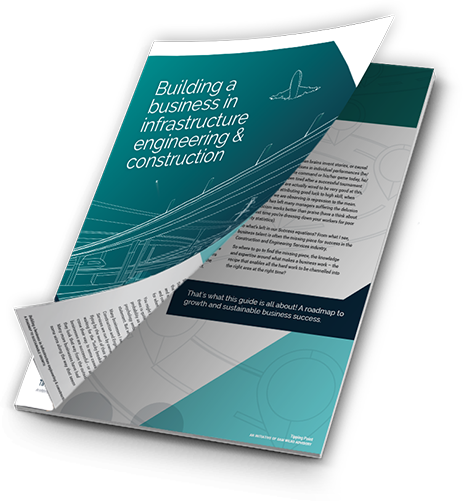Companies and individuals that know my business and have worked with me in the past are aware that I have a favourite saying about the Engineering and Construction Industry: “Nine Projects go well and the tenth Project blows the company up!” I’m here to say that there are plenty of disastrous projects that demonstrate the truth of this statement for businesses large and small. So what sits behind this simple-sounding warning?
Business is all about managing risk. Why? Because we invest in business to make a return on investment and with risk comes reward. It’s certainly possible to find low-risk work and make money out of it, but over time there will always be someone who shows up prepared to do the same job just that little bit cheaper than you’re prepared to. On the other hand, the greater the perceived risk on offer, the lesser the number of competitors likely to put their hand up. Of course, this then begs the question: How much is too much risk to take on?
Great businesses are better than their competitors at managing risk, whether it’s risks associated with individual projects or the issues that inevitably show up for every business at some point in the journey to maturity and beyond. So the answer is not just about avoiding risk. So too, the answer to how much risk to take on board does not lie solely in the likelihood (or possibility) that given risk(s) will materialise.
The trick is in both understanding and managing the consequences of those most-feared events BEFORE they happen. (By the way, should you wish to obtain a second opinion on this, look no further than that occasionally mentioned entrepreneur Richard Branson, whose first rule of business is “you have to protect against the downside” (Sir Richard’s emphasis – you might like to refer to “Business Stripped Bare” – Adventures of a Global Entrepreneur” for more details).
But where to start? In my experience small to medium enterprises put too little effort into reading and UNDERSTANDING contracts with clients prior to entering into them. Setting aside the usual excuses of not enough time / money for good advice the typical reason given is “the client / Government entity is much bigger than us and never accepts changes to their standard terms proposed by the likes of us”. It’s sometimes true that clients have key terms that they will not budge on, however as an example many larger entities are relatively relaxed around small pre-payments / more frequent invoicing to keep a supplier in a cash flow neutral position. Remember, if you don’t ask, you definitely won’t get.
So in keeping with the cash flow theme, if your company doesn’t have unlimited cash resources (and what business does?) make sure each time you take a new job on board and in addition to having appropriate insurances in place for insurable risks, do your best to confirm your client carries the risk for things that you have no or very little ability to manage.
Should this not be possible at least make sure that: (a) your exposure to these risks is limited to a part of your enterprise or to an amount that will not send your whole company broke and (b) your client retains an active interest in helping you to solve the issue without (again) sending your company broke. Sounds simple, right? With success comes confidence, and with confidence can come complacency (“we’ve seen this all before”).
This reminds me of some advice given to me by a wise end experienced mentor: “trust is good, checking is better…..” Might be time to do some investigation into some of those “tenth-project disasters!”
